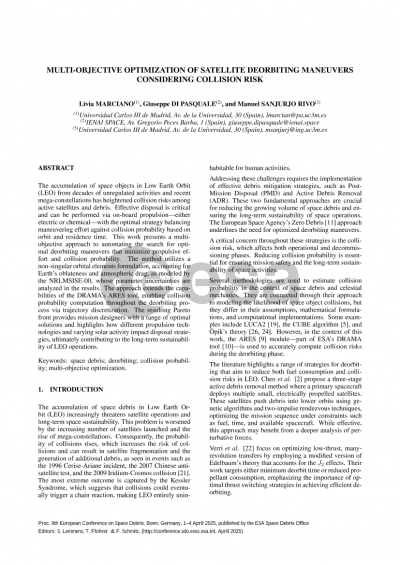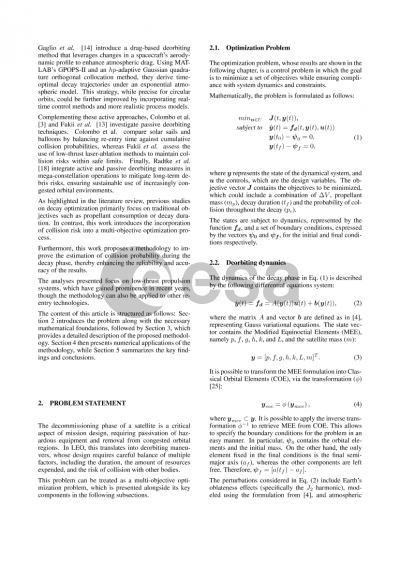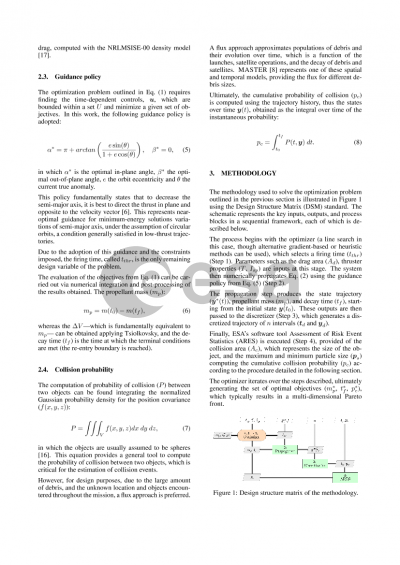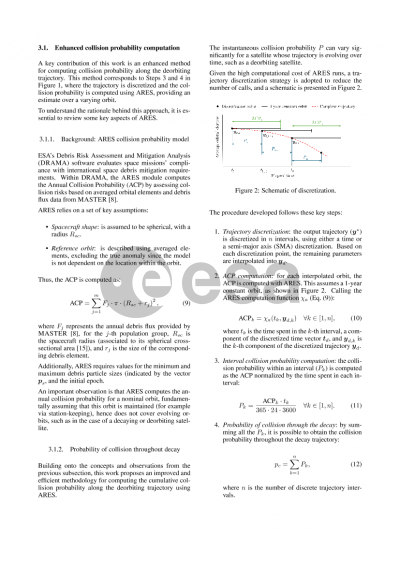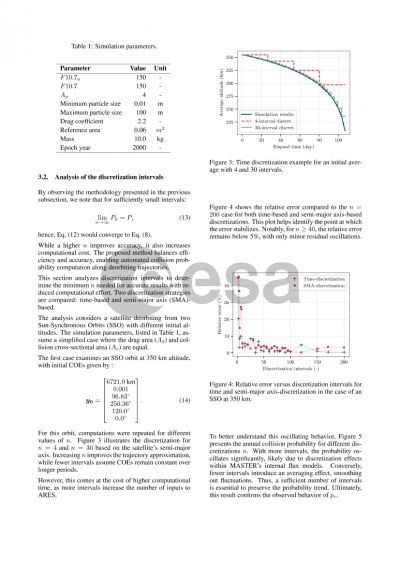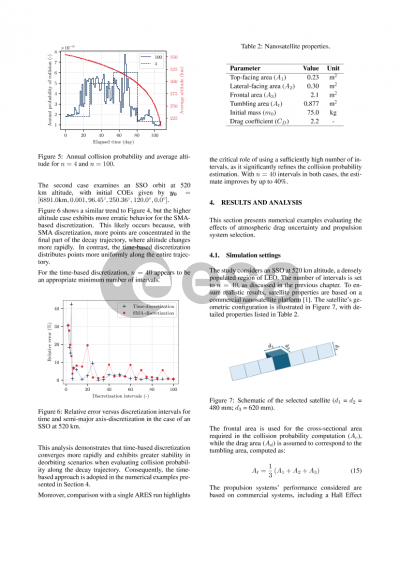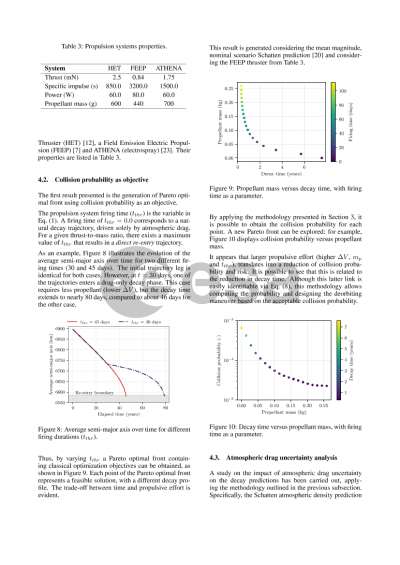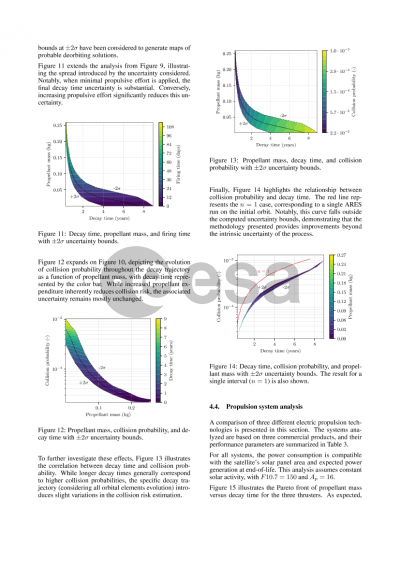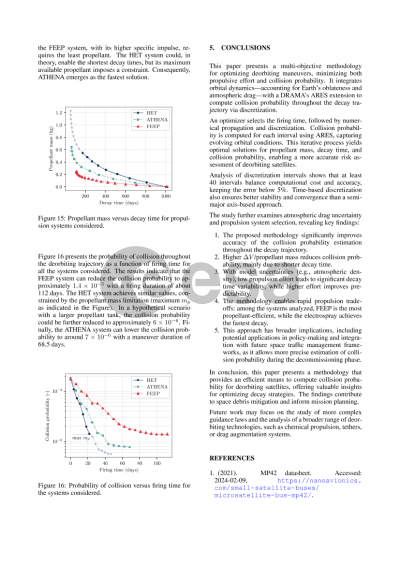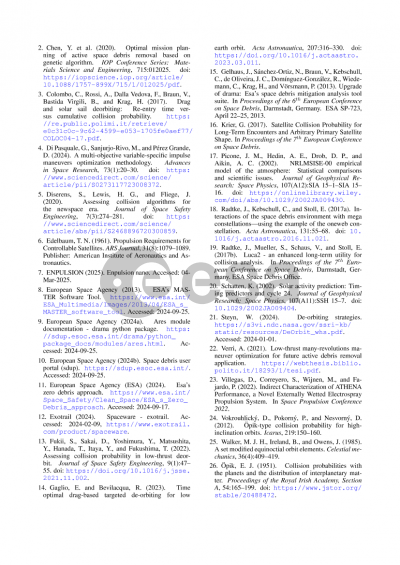Document details
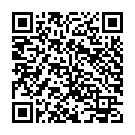
Abstract
The accumulation of space objects in Low Earth Orbit (LEO) is the result of decades of space activities lacking proper regulations and accountability, as well as the recent proliferation of large multi-satellite concepts, such as mega-constellations. The presence of these objects in LEO, including both active satellites and debris, poses increasingly higher risks to space assets and their operations, due to potential collisions between them. Alongside various actions that the space industry is undertaking to mitigate this issue, the disposal of satellites plays a central role. Disposal can be actively performed employing a propulsion system, either electric or chemical. The optimal disposal strategy depends on a series of factors, creating potential trade-off opportunities between maneuvering effort, which relates to the system capabilities and its mass, and the cumulative probability of collision during the disposal phase, which is a function of the LEO regions crossed and the residence time.
This work proposes a study with a multi-objective approach aimed at automating the search for optimal deorbiting maneuvers, minimizing Delta V and cumulative collision risk. The implemented method considers a non-singular orbital elements formulation for the dynamics of the satellite, including perturbations, which uses the NRLMSISE-00 density model. In addition, the effects of onboard propulsion systems, both electric and chemical, are evaluated, resulting in low-thrust and impulsive maneuvering strategies, respectively. The collision risk is computed using DRAMA’s python package [1] from the European Space Agency, specifically with Assessment of Risk Event Statistics (ARES) [2] . Since ARES provides the annual collision probability for a nominal orbit, this work extends its usage for a deorbiting satellite, providing an accurate estimation of the collision risk.
The result of this process is a Pareto optimal front which allows mission designers to explore optimal solutions to the problem and evaluate the best option for each specific mission. Furthermore, this work analyzes the impact of the technology used, highlighting the difference in approach between chemical and electric systems, their diverse array of performances, and their capability to fulfill increasingly stringent regulations on disposal.
The findings of this study contribute to the enhancement of post-mission disposal analysis for LEO satellites, emphasizing the critical importance of a multi-objective optimization approach in the end-of-life planning of satellite missions and ensuring the long-term sustainability of space activities.
[1] European Space Agency. *DRAMA Python Package Documentation*. https://sdup.esoc.esa.int/drama/python_package_docs/
[2] European Space Agency. *ARES Module Documentation - DRAMA Python Package*. https://sdup.esoc.esa.int/drama/python_package_docs/modules/ares.html
Preview
